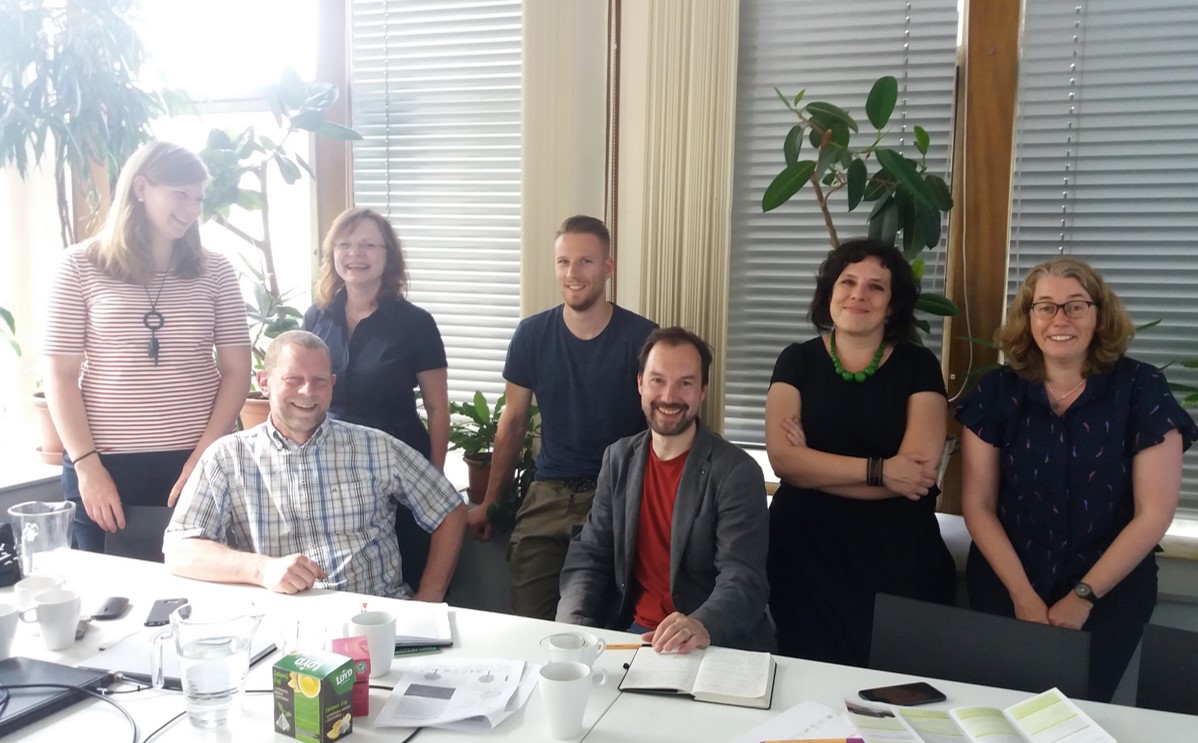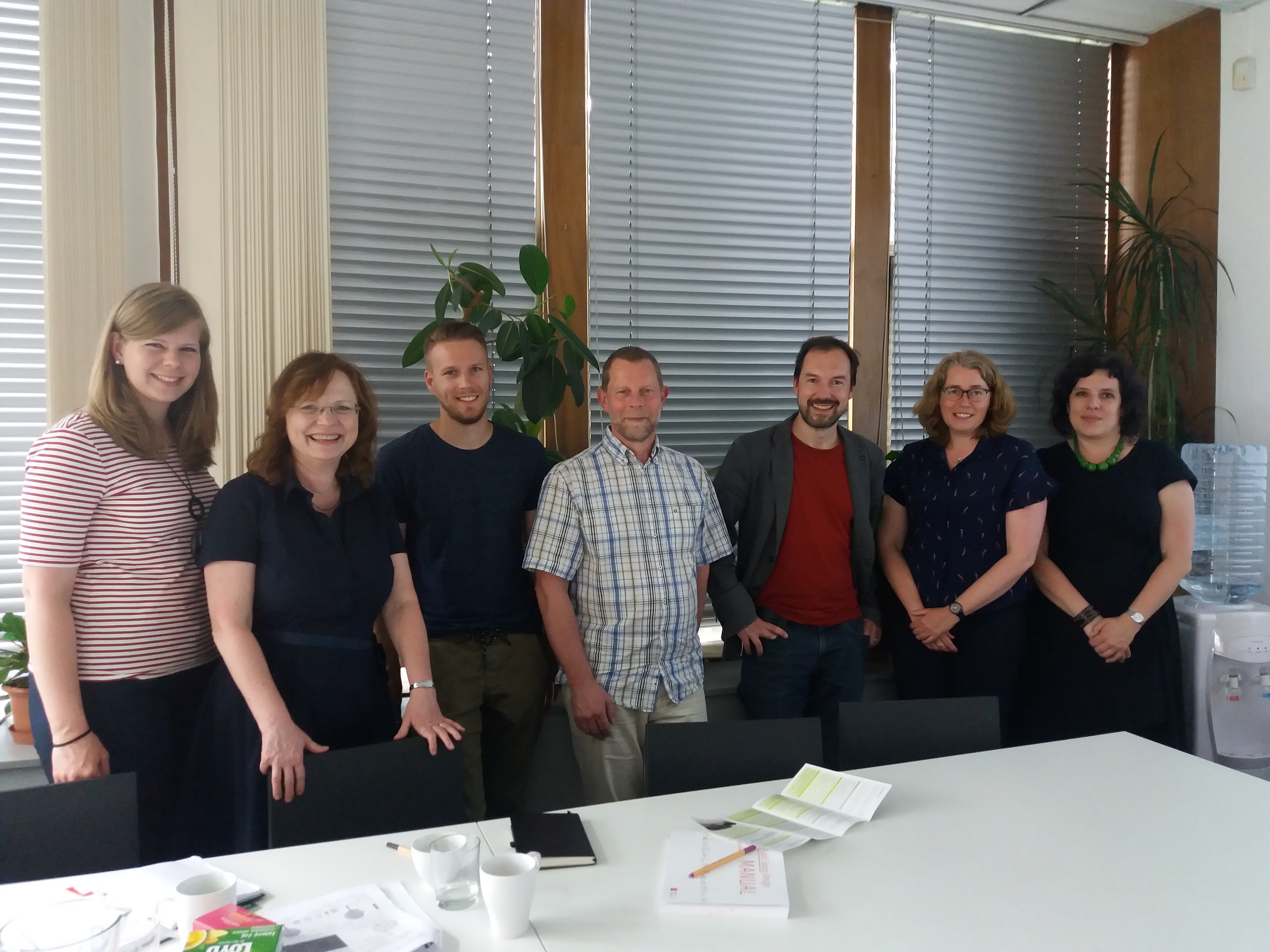
Buddy Meeting Between Eindhoven and Prague
- Fri, 04/10/2019
The so-called “Buddy System” has been developed within the UNaLab project as a set of tools and activities to transfer knowledge and results about nature-based solutions from the front-runner cities to the follower cities. The overall goal is to facilitate the follower cities in the process of defining possible business cases for the replication of UNaLab nature-based solutions in other European and non-European contexts, thus maximising the impact of the project.
As part of the buddy activities organised between the cities, front-runner city Eindhoven and follower city Prague used the opportunity to conduct a four-hour buddy meeting on the first day of the UNaLab consortium meeting in Prague in May. Prague was represented by the environmental department of the city hall and the Prague Institute of Planning and Development (IPR Prague). Eindhoven was represented by municipal advisors on water and green spaces. The time was used to especially understand the conditions under which the cities of Eindhoven and Prague can act in terms of city development and climate adaptation.
Below, you can find some aspects of the meeting which were discussed.
City administration and responsibilities:
- In Prague, city development is done by different institutions. On the one hand, there is the City Hall of Prague, which e.g. is responsible for building permissions and on the other hand, there is IPR Prague, which is a city-funded institution and which is responsible for drafting concepts, strategies and land use plans (documentation). In Eindhoven, city development is tackled in one civil service organisation, partly from the strategic division but mostly from the so-called spatial domain. This covers the whole process, from initiative to maintenance.
- What stands out is that Prague is divided into municipal and administrative districts and boroughs. Currently, there are 57 self-governing municipal boroughs which have been further grouped into 22 administrative districts. The administrative districts differ a lot in terms of number of inhabitants (from 500 to 10,0000 inhabitants) and their local conditions. Nevertheless, they are autonomous self-governing city boroughs with own elected bodies. This construction makes decision-making slow and difficult. This brings uncertainty when working for the city as a civil servant or supporting staff. Eindhoven has one municipal government, one council for the whole city, but aims to focus the work to different areas. This means that the organisation zooms in on smaller scales - to different parts of the city and neighbourhoods. This makes the work less complex than in Prague but brings other challenges. For example, on the other side of the scale, the city must work on regional development with neighbouring municipalities to strengthen the position of the ‘Brainport’ region in the Netherlands.
Climate adaptation:
- Prague has an Adaptation Strategy, with an implementation plan for 2018-2019 containing several projects for climate adaptation. In terms of climate adaptation, the city of Prague collaborates with IPR Prague and other city funded institutions. The following implementation plan is in preparation. In Eindhoven, the policy concerning climate change is defined in a Climate Plan (Klimaatplan) and the “Gemeentelijk Rioleringsplan 2019-2022” (GRP, city sewer & water management). The GRP contains concrete measures and a financial policy. On project level, the strategy is to start working on climate adaptation in smaller projects, learn from those projects, and process experiences for example in guidelines for design and maintenance, to apply in other larger projects.
- Since the end of 2018, Prague has a new Mayor, who set the aim to plant 1 000 000 trees in the city of Prague. The trees should contribute to giving shade, cooling the city and improving the air quality.
Planning and changing of the public space:
In Eindhoven, there is a problem with the ever-increasing number of cables and pipes underground, which makes it difficult to plant trees and which endangers and damages existing green. How does Prague deal with this? Prague faces similar problems as Eindhoven and tries to make use of design manuals and standards for Public Space Design. In addition, the Prague Building Regulation provides specific rules for trees and utility networks. Eindhoven also has a manual, which sets technical standards.

Citizen and stakeholder involvement:
- Eindhoven has many years of experience with citizen and stakeholder involvement.
- Prague understands that participatory planning helps to harmonise views among stakeholders in planning processes, prevents conflicts between parties representing various interests, and contributes to a long-term consensus. With this in mind, the Office of Public Participation at IPR Prague was set up in January 2015 as a response to the growing demand for the involvement of Prague’s citizens in urban planning
- The city of Prague has presented the draft of the metropolitan plan (land-use plan) to its citizens. The development of a new land use plan is necessary, because during the period of validity of the current land use plan, i.e. since 1999, exactly 6980 changes were processed. In 2017, mobile information containers were located around Prague to allow the inhabitants to familiarise themselves with it and to give them the possibility to comment on the plan. This participatory approach has been conducted by IPR Prague. After a period of 2 months, in which it stopped at a total of 18 locations in Prague, it received over 10,000 comments.
- The Municipality of Eindhoven has set up the "Trefpunt Groen Eindhoven", to merge the number of responses from all the different associations and action groups to these types of plans into one constructive response.
- Eindhoven is working on an ‘app’ to be used in co-creation processes around projects. This app uses geo-triggered surveys to supply information about projects and to collect ideas and wishes about the use and design of public spaces. This is connected to a data platform for project managers. One of the objectives behind the app, is to streamline all the co-creation processes that simultaneously are happening in the city, due to the number of new projects starting.
- The green infrastructure office of IPR Prague organised together with the Next institute of Brno two conferences with the focus on green and blue infrastructure, to which European experts from Great Britain and Scandinavia came as guest speakers. The aim of the conference was to enhance the knowledge of green and blue infrastructure and how to integrate it into local strategies.
Here you can see the presentations of them:
Presentation I - starting from minute 20
Presentation II - starting from minute 3
The buddy meeting was a great opportunity to better understand the conditions in each city. All participants could take some learnings from the meeting and are looking forward to some future knowledge exchange, e.g. during project meetings or additional buddy meetings.